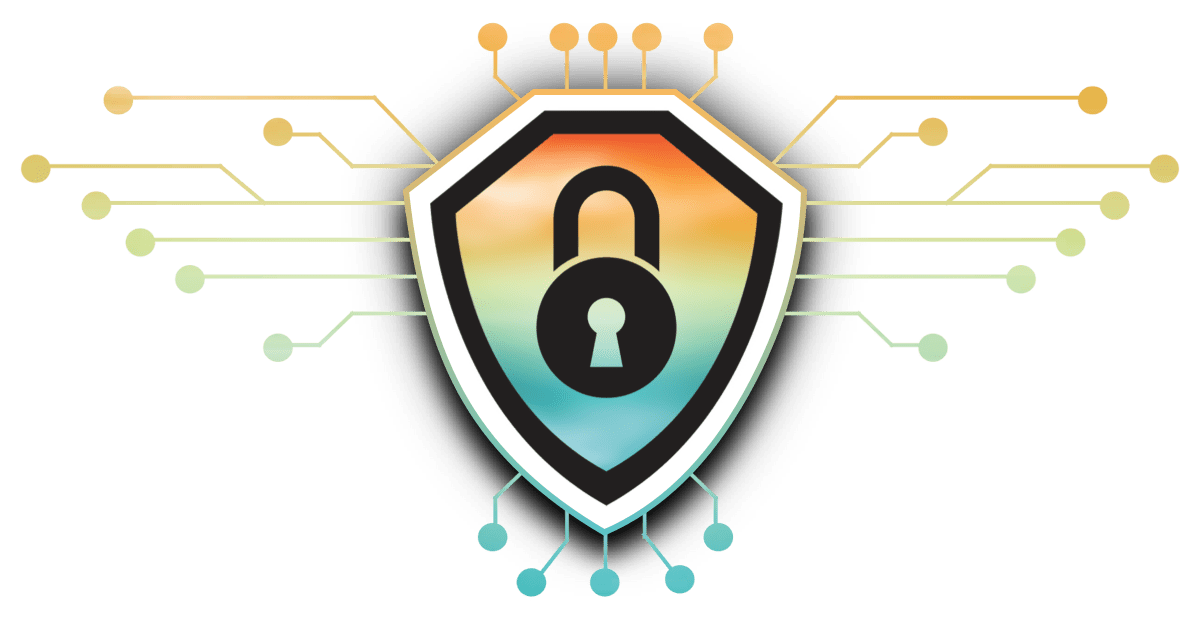Cyber Resilience and Its Importance for Your Business
Cybersecurity Ventures ransomware statistics reveal that a company will be hit by ransomware every 11 seconds in 2021.
Cybercrimes are rapidly growing both in complexity and frequency. To stay competitive in such an unpredictable environment, the security of your organization’s data, applications, network and critical business processes should be your top priority. Traditional security solutions and methodologies are no longer enough to combat today’s sophisticated cybercrimes. Your business must have a robust cybersecurity resilience strategy in place that will enable you to maintain business continuity before, during and after a cybersecurity incident.

What Is Cyber Resilience?
Computer Security Resource Center defines cyber resiliency as the ability to anticipate, withstand, recover from and adapt to adverse conditions, stresses, attacks or compromises on systems that use or are enabled by cyber resources.
Given today’s increasingly evolving threat landscape, cyber resilience has become an important factor in determining the success of an organization. Cyber resilience helps businesses defend against cybercrimes, mitigates risks and severity of attacks, and enables business continuity. A cyber-resilient business is well prepared to tackle cybersecurity incidents and can effectively respond to and quickly recover when such events do occur.
What Is the Difference Between Cybersecurity and Cyber Resilience?
Cybersecurity deals with strengthening an organization’s defenses to prevent cybercriminals and malicious programs from compromising its network, data and IT infrastructure. It encompasses strategies and actions to keep threat actors at bay and protect company assets from loss, theft or damage.
While cybersecurity is an essential part of an organization’s security strategy, protection from sophisticated cyberattacks is never guaranteed. This is where cyber resilience comes in. Cyber resilience encompasses a wider umbrella, including deploying policies, solutions and clearly defining the steps that need to be taken when measures such as cybersecurity fail.
Cyber resilience is a broader concept covering business continuity, securing critical business processes, identifying potential threat vectors, managing risks, minimizing the severity of attacks and implementing procedures to withstand cybersecurity incidents. Cyber resilience enables an organization to continue normal business operations without any interruption during and after disruptive events such as cyberattacks or technical failures. When done right, cyber resilience enables an organization to remain operational despite significant cyber disruptions.
Key Components of a Cyber Resilience Framework
Given the unprecedented surge in cybercrimes, most businesses would agree that cyberattacks are no longer a matter of “if” but “when.” As such, your business must ensure appropriate measures are in place to not just purge cybercriminals and protect critical assets, but also overcome any hurdles when disasters strike. To improve the overall security and resiliency of your organization, you must implement a comprehensive cyber resilience framework. Your cyber resilience framework must include the following six key components:
1. Identify
The first component of a cyber resilience program is to identify critical business functions and assets, and assess cybersecurity risks that could potentially disrupt them. This is vital to understanding and managing the risks to your organization’s network, IT infrastructure and information systems.
2. Protect
This step involves deploying necessary tools and technologies and implementing security measures to ensure your systems, applications and data are protected. This component includes training and awareness, information security policies, identity management and access control, and regular maintenance of your IT infrastructure.
3. Detect
The third function is to scan for vulnerabilities and suspicious activities and analyze their potential impact on your business. This step involves continuously monitoring to identify anomalies and cybersecurity risks to protect your sensitive information and systems from cyberattacks, system failures and unauthorized access.
4. Respond
This is an important function of a cyber resilience framework that highlights appropriate steps that need to be taken when a cybersecurity incident occurs. The objective of this component is to implement strategies and actions to mitigate the negative effects of unplanned cybersecurity events.
5. Recover
The purpose of this function is to formulate an action plan to quickly return to normalcy after a security incident occurs. This helps restore systems, applications or information impacted by a security breach or system failure. This step is vital in ensuring there is minimal or no impact on critical business functions or capabilities.
6. Adapt
Cyber resilience is not a “set it and forget it” kind of a program. It needs continuous improvements and modifications to withstand today’s complex cybercrimes. Modern-day businesses use advanced solutions like AI-assisted analytics that provide elaborate reports on cyberattacks. These reports provide insights into your overall security posture, allow you to analyze and learn from past incidents, and apply what you’ve learned to prepare for future events.
Why Is Cyber Resilience Important?
One successful cyberattack is enough to wreak havoc, cause huge financial losses or in extreme cases, shut down your business permanently. Therefore, cyber resilience is important to identify, assess, manage, mitigate and recover from malicious attacks. A good cyber resiliency strategy not only helps protect critical systems, applications and data, but also enables quick recovery and business continuity in the face of disruptive cyber incidents. A comprehensive cyber resiliency program will help your business maintain sustained business operations and stay afloat even during times of crisis.
Benefits of Cyber Resilience
A well-established cyber resilience strategy offers multiple benefits before, during and after disruptive cyber incidents:
- Minimized Economic Impact: According to a report by the Center for Strategic and International Studies (CSIS) titled “The Hidden Costs of Cybercrime,” global losses from cybercrime are approaching $1 trillion. A cyber resilient organization is well prepared for cyberattacks and can recover from disasters faster, which results in reduced financial losses from security breaches or events.
- Helps Remain Compliant: Businesses today collect and handle large amounts of data including sensitive customer information and mission-critical business data. As such, businesses must comply with multiple regulations such as the General Data Protection Regulation (GDPR), the California Consumer Privacy Act (CCPA), the Florida Information Protection Act (FIPA), etc. Failing to comply with these complex regulations could lead to fines, penalties and lawsuits. An effective cyber resilience framework allows you to assess the security status of your organization, identify loopholes that could lead to non-compliance, and fill in the gaps to ensure legal and regulatory requirements are met.
- Improved Brand Reputation: A data breach incident could cost your business much more than just financial losses. It can tarnish your brand’s reputation and deteriorate customer trust. Cyber resilience helps improve information security and position your business as a secure entity that your customers can rely on.
- Sustained Business Continuity: Cyber resilience helps improve the overall security of your business, eliminate threats before they inflict any damage and reduce the frequency of cyber incidents. A robust cyber resilience program also includes an incident response plan that helps mitigate risks and minimize the impact of cyberthreats on your business. This helps you run your business with minimal downtime or disruption during and after a disaster.
How Can Cyber Resilience Be Improved?
Here are four methods that you can use to strengthen your organization’s cyber resilience:
- Automation: Cyberattacks are becoming more complex and relying on manual systems to tackle cybersecurity risks are no longer enough. Progressive businesses are adopting artificial intelligence (AI) and machine learning (ML) to automate critical functions that help them identify vulnerabilities faster, assess risks more accurately and respond to cyber incidents in a timely manner. Automation not only helps in reducing the frequency of errors but also helps improve efficiency and accuracy and enables faster decision-making.
- Implement Stringent Security Protocols: When it comes to data security, no one can be trusted, not even insiders. In fact, insider threats have increased by 47% in the past two years. Your organization must enforce rigorous security measures, such as multi-factor authentication, identity and access management, and encrypt valuable digital assets to minimize the risks of data theft and unauthorized access.
- Make Cyber Resilience a Part of Your Corporate Culture: The security of your organization is not the sole responsibility of your IT team. The entire organization is responsible. Security awareness and training programs should be conducted regularly to stay up to date with the latest trends in cybersecurity. Efforts should be made to encourage your workforce to adhere to the security policies and procedures set by your organization.
- Back Up Your Data: When disaster strikes, you last resort is your backed up data. By securely backing up your data, you can quickly restore and recover from any unforeseen disruptive events. Having a copy of your valuable assets is vital to ensure business continuity and protect your business against data loss or corruption due to cyberattacks or IT failure.
Improving Your Cyber Resilience With Spanning 360
Since the beginning of the COVID-19 pandemic, companies have been adopting SaaS platforms, such as Microsoft 365 and Google Workspace, at an astounding pace. The 2020 State of SaaSOps report reveals that businesses today use an average of 80 IT-sanctioned apps and 70% of the business apps they use are SaaS-based.
As companies look to implement a hybrid work model, reliance on SaaS applications will only continue to grow. This means that SaaS applications will hold even greater volumes of sensitive business and customer information. To survive and thrive in this unpredictable threat landscape, you must ensure your SaaS data is securely backed up and protected. You need a multi-layered approach to protect your Microsoft 365 and Google Workspace data.
Spanning 360 helps improve your organization’s cyber resilience by providing an end-to-end protection solution for Microsoft 365 and Google Workspace, with advanced capabilities to help prevent, anticipate and mitigate account compromise and data loss. It’s remarkably easy to install, manage and use.
Spanning 360 is fully automated and provides maximum value by combining comprehensive protection, streamlined administration and end-user self-service functionality to reduce the IT burden, all with transparent, per-user pricing, and unlimited storage and retention.





